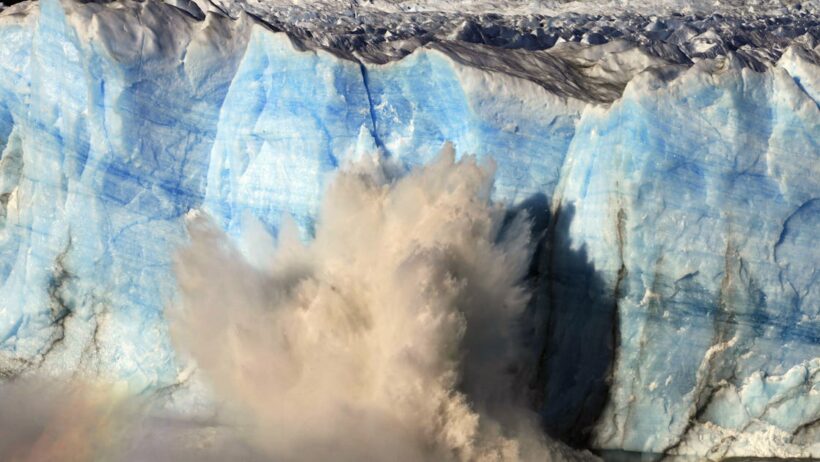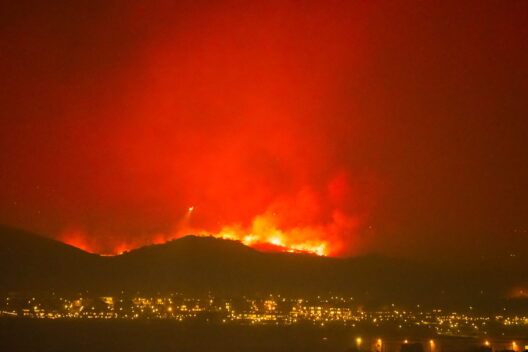As we dive into the intricate tapestry of Earth’s dynamics, one cannot help but ponder: can the planet’s axial precession significantly influence climate change? This question beckons a closer examination of the subtle yet profound rhythm of our planet’s movements and their potential ramifications on our climate. The time has arrived to unravel the enigmatic concept of axial precession — our planet’s slow dance through the cosmos.
First, let us comprehend precession itself. Axial precession, often referred to as the precession of the equinoxes, is the gradual shift in the orientation of an astronomical body’s rotational axis. Specifically, Earth experiences this due to gravitational forces exerted by the sun and the moon on its equatorial bulge. This phenomenon occurs over a span of approximately 26,000 years. Understanding this staggering time frame aids in recognizing the continuity of Earth’s climate patterns and their interrelations with various celestial movements.
The significance of axial precession lies in its impact on the cyclical nature of climate on Earth. To appreciate this, one must consider how the Earth’s axial tilt and precession interplay with solar insolation — the amount of solar radiation reaching the Earth’s surface. As these axes shift imperceptibly over millennia, variations in axial tilt and precession can alter global climate patterns, subsequently affecting biomes and ecosystems. In simpler terms, long-term shifts in Earth’s orientation lead to significant transformations in climate over extended periods.
Now, let’s explore the interplay between axial precession and historical climate change. The Milankovitch cycles, a term popularized by Serbian mathematician Milutin Milankovitch, encapsulate the interplay of Earth’s three main orbital characteristics: eccentricity, axial tilt, and precession. Each of these factors influences climate, contributing to glacial and interglacial periods throughout Earth’s history. During periods when the axial tilt is pronounced, summer months can become significantly warmer, instigating glacial retreat. Conversely, when the axial tilt is minimal, colder summers might hinder melting and encourage glaciation.
The relation between precession and climate does not merely reside in theoretical realms. Geological records reveal a world once dominated by ice sheets and lush ecosystems markedly different from our contemporary landscape. Paleo-climatologists rely on ice cores and sediment layers to reconstruct past climates, unveiling stories of Earth’s fluctuating temperature and precipitation patterns. These archives provide compelling evidence of climate oscillation, closely aligning with Milankovitch cycles — particularly those related to axial precession. Hence, one can discern a correlation between Earth’s cosmic choreography and climate variability.
Yet, in the present day, we find ourselves grappling with a more immediate crisis: anthropogenic climate change. The deliberate actions of humanity, through carbon emissions and deforestation, have incited unprecedented rates of climate alteration within a geological blink of an eye. The stark reality presents a paradox: while axial precession operates on timescales beyond human comprehension, modern climate change is escalating alarmingly due to human influence. This divergence raises an intriguing question: can long-term celestial phenomena like axial precession, which traditionally unfold over millennia, garner implications for a climate crisis exacerbated by rapid human activities?
In fact, certain scholars posit that understanding the mechanisms behind axial precession could arm us with insights into our planet’s climate resilience. As we observe climate patterns evolving, recognizing the natural rhythms of precession might aid in forecasting climate variability in the context of currently accelerating anthropogenic factors. This interaction becomes especially urgent as regions vulnerable to climate change face exponential risks — from rising sea levels to erratic weather phenomena.
Moreover, the dialogue between precession and contemporary climate dynamics is not solely theoretical; it also opens avenues for innovative climate adaptation strategies. For example, regions experiencing shifts due to previous Milankovitch periods may serve as reference points for current climate models. Such insights could aid agricultural practices, water resource management, and urban adaptation initiatives, ultimately paving the way for a more sustainable interaction with our environment.
However, it is crucial to approach this investigation with caution. As we attempt to intertwine ancient orbital mechanics with present-day climate challenges, one must consider the myriad factors contributing to climate change today. Axial precession operates on a scale that, while monumental in geological terms, pales in comparison to the immediacy of human impacts. Thus, while knowledge of these ancient mechanisms may enhance our understanding, it cannot eclipse the pressing need for immediate action against human-induced environmental degradation.
In conclusion, axial precession embodies a fascinating facet of Earth’s natural history, illuminating the delicate balance between celestial mechanics and climate. Acknowledging the slow and steady rhythm of our planet can enhance our comprehension of climate variability, even as we navigate the challenges wrought by contemporary human activity. As we confront the present, let us remain vigilant, utilizing ancient wisdom gleaned from Earth’s celestial dance to forge a path toward a more sustainable future, fostering resilience against climate change while championing the restoration of our planet.








